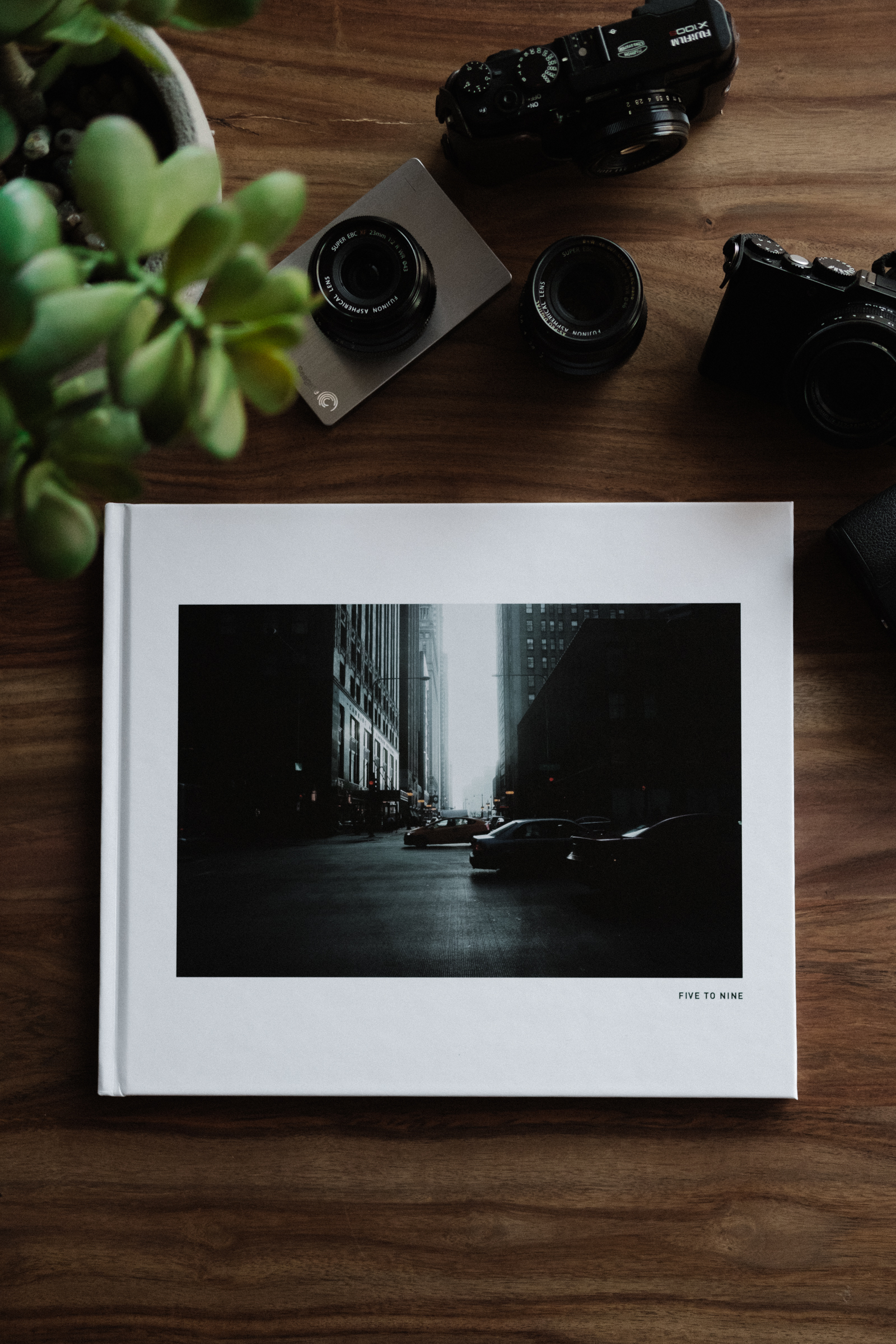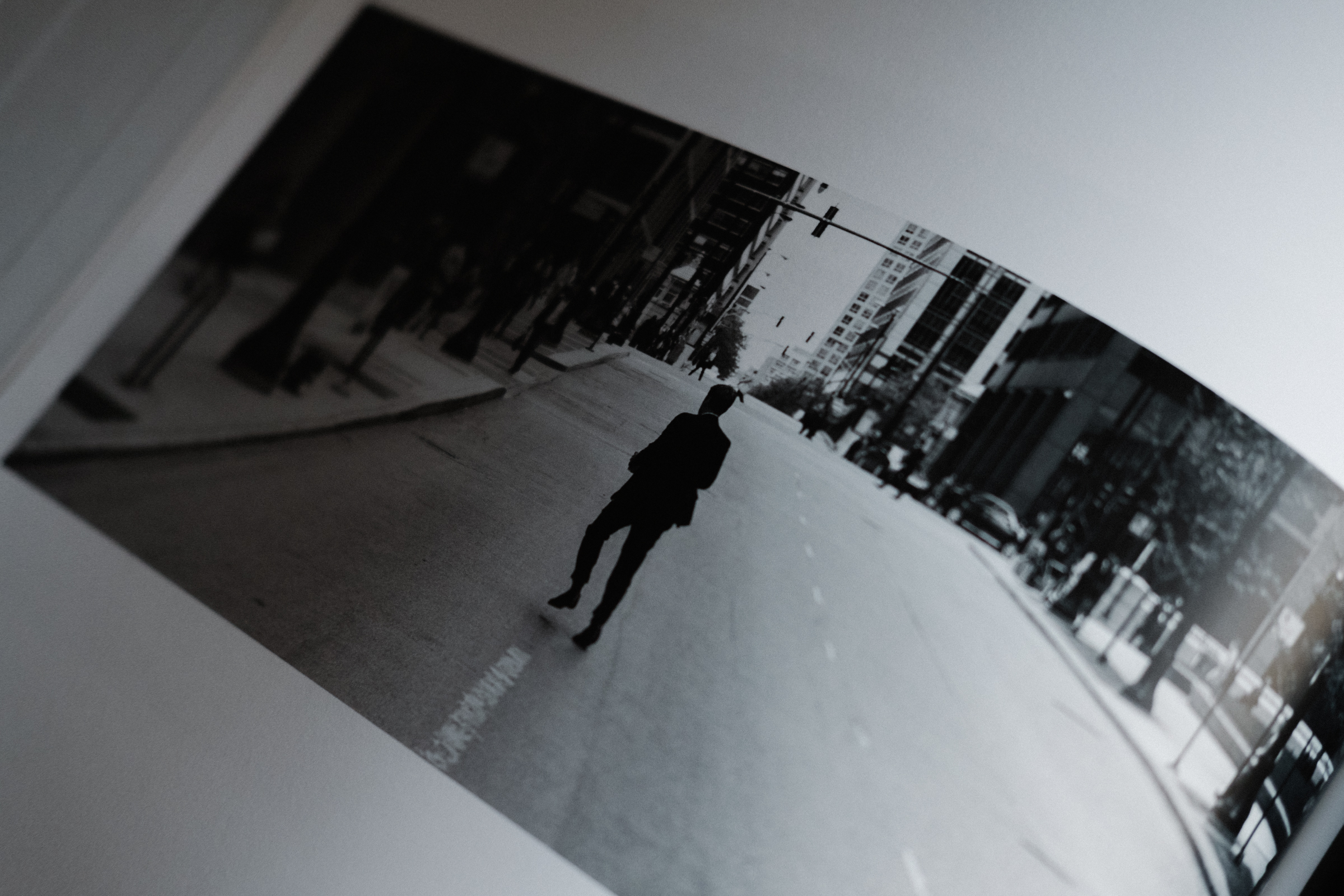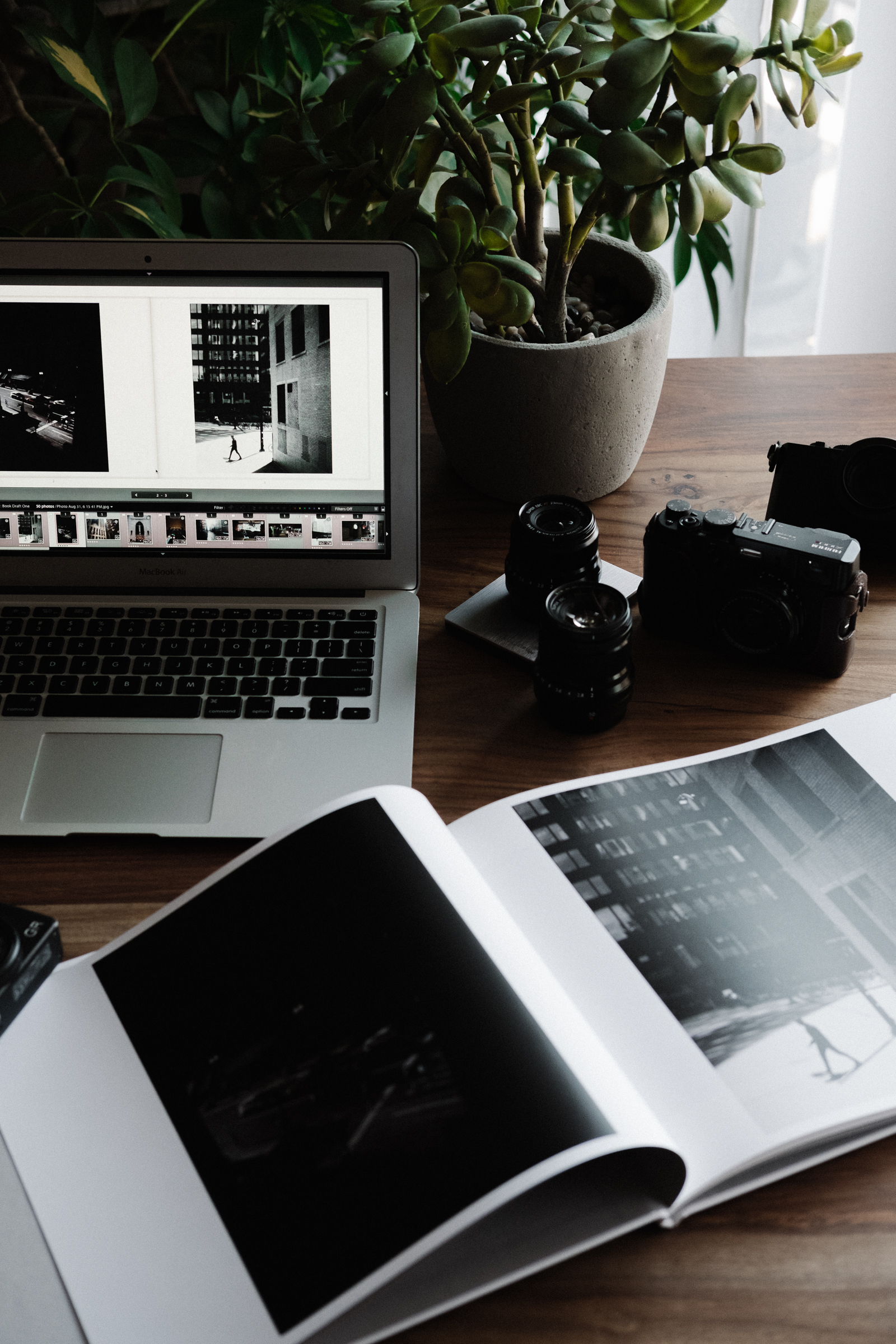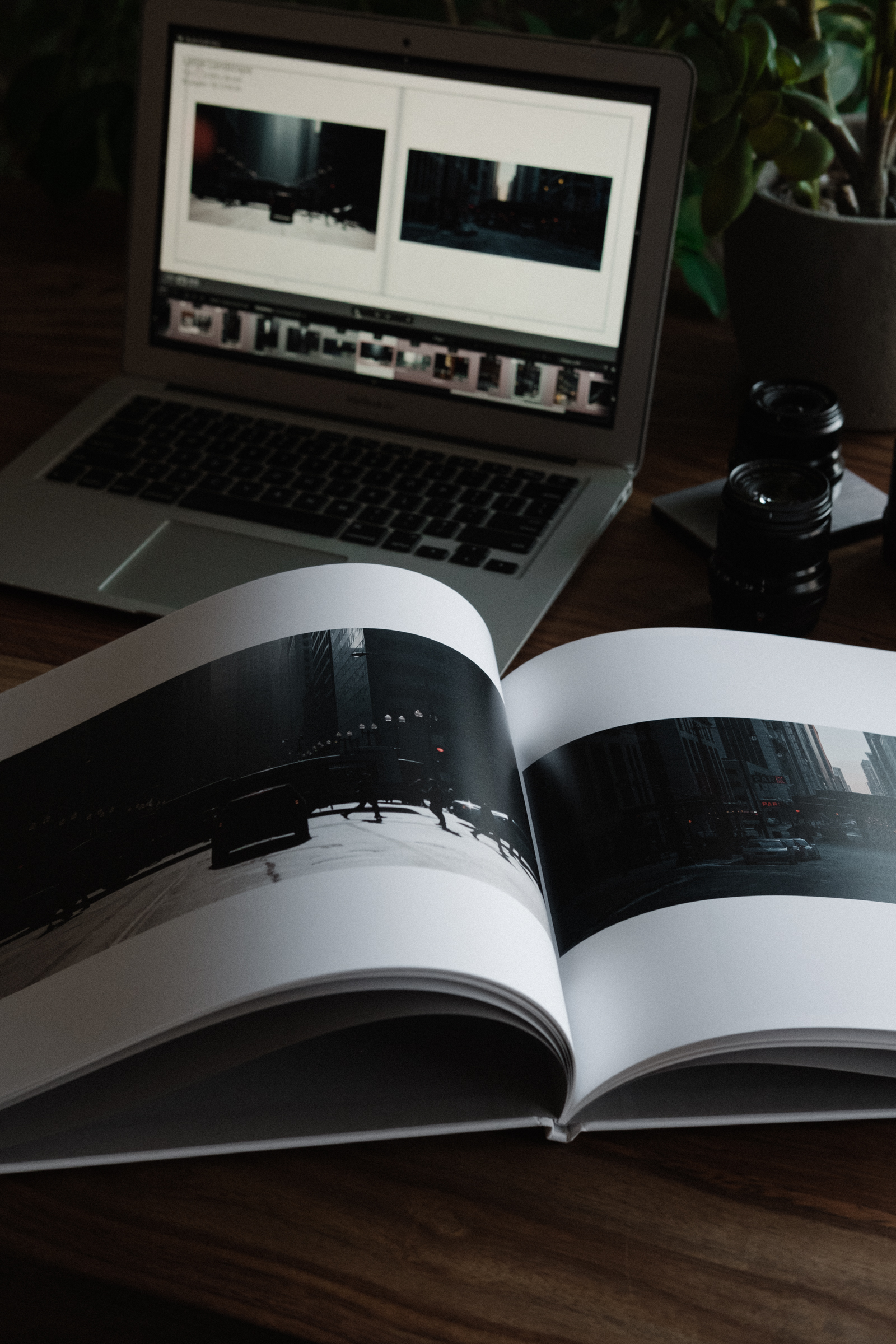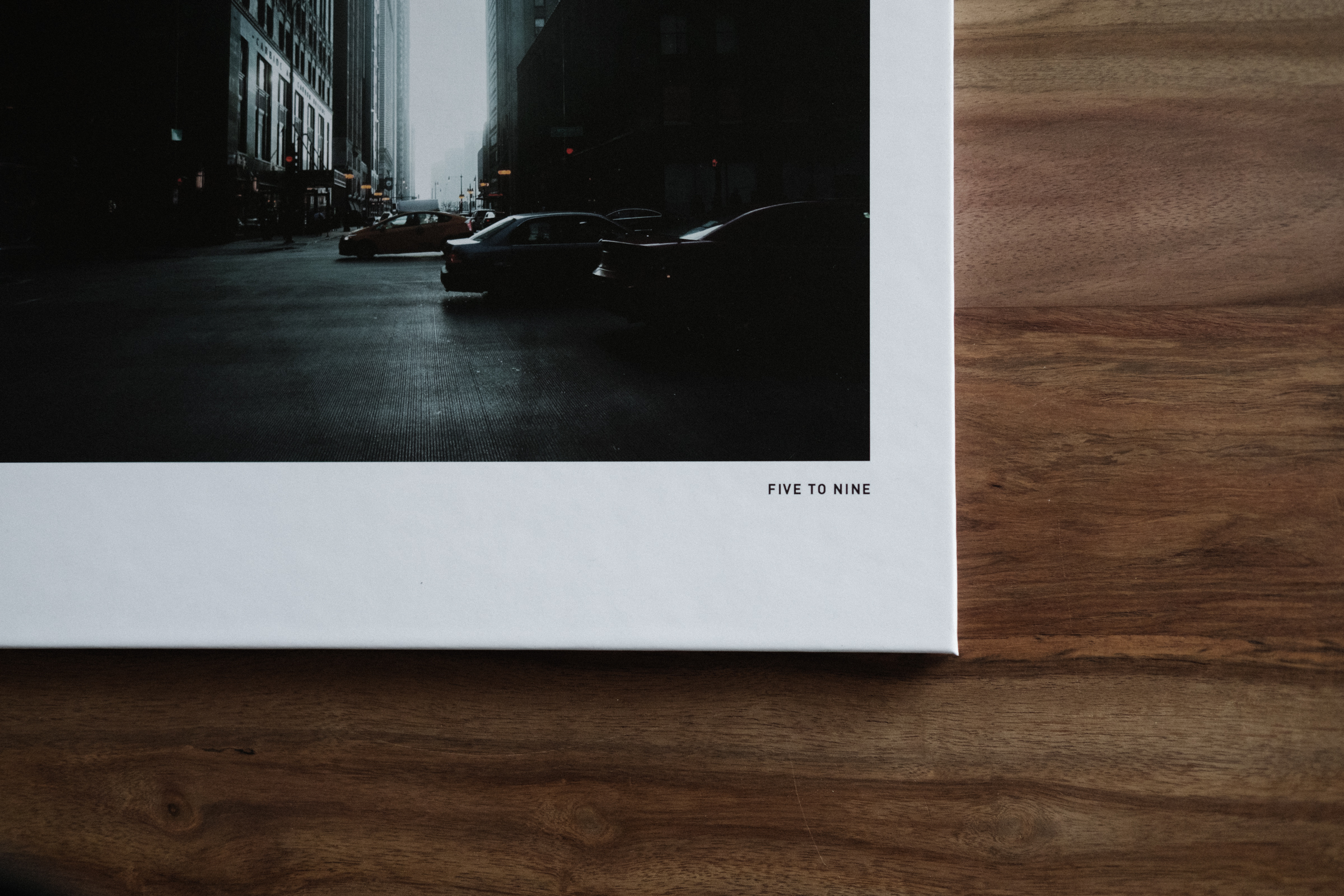5 to 9: Street photography of the city of Chicago
As a guy who mostly shoots (like 99.9%) digital photography it is easy for me to forget the world shot film exclusively for over 100 years before the first digital photo. Photos used to be treasured. They were kept in wallets, signed in yearbooks, mailed in Christmas Cards. These artifacts were special and unique. But slowly, through the mobile phone and content overload the photograph became disposable. Just like the mp3 a decade earlier, the photograph (or image in the common parlance) became another medium sacrificed at the altar of convenience.
This mode of thought even afflicted how I viewed my own photos. Fire off a couple hundred shots and call it a day. Edit the ones I like. Toss the ones I don't. Or keep 'em. Memory is cheaper than ever. Add it to the stack of hard drives. Disposable images on external drives with nowhere to live. Ones and Zeros arranged to be used another day.
When Blurb reached out to me I was still in this mindset. A company that prints books wants to work with me to show how their books can tell a bigger story than a 3.5" screen? No pinching to zoom, no brightness levels to adjust? Only paper and ink to tell that story? No notifications butting in, or low battery warnings? Just the photograph? That kind of pressure got to me. So I stalled. I didn't get back to them because I was afraid that my work would be shown as the fraud it is. A derivative rip-off of the greats. Saul Leiter and Vivian Maier (no relation).
I went on posting some work on my IG stories. Some photos of things I saw on the train. Others when I was walking to work. Cataloging people going about their lives. Silent commuters waiting to get home. I would post 3-5 each day and no one really noticed. But then out of nowhere, the comments started to come in.
"You should print your work"
"Where can I buy your prints?"
Color me shocked. Here I was afraid to print my work while photographers I admire were encouraging me to do the very same thing. Like any sane man, I frantically emailed Blurb hoping the offer was still on the table. Thankfully they were still interested so I dove right in. I had my wife and friends edit down some of my work into the most interesting photos. What made it easy was using the Adobe Lightroom module. I always wondered what the "Book" panel did in LR. Now I know. As easy as drag and drop. No messing with dpi. No screwing around with resolution and image size. Lightroom does all the work. Once I arranged it in the order I liked, I hit "Send to Blurb" and Lightroom uploaded the whole thing while I drank a couple glasses of Pinot Noir to celebrate.
I ended up choosing a 13 x 11 book on matte paper with 48 of my favorite photos highlighting the city of Chicago. I named it "5 to 9" as that was usually the time I was taking the photos. Walking to the train after work, or between jobs. Capturing the city as it transports everyone back to their home. The whole infrastructure dedicated to getting people the hell out of there. Buses, trains, cabs, Ubers, all with one goal. Get. Them. Home.
It is special to see your work in print. All of a sudden it becomes permanent. It lives somewhere. It can be shared without fear of aspect ratio or screen resolution. Just give someone the book. And when you're done, it stays there. On your bookshelf. On your coffee table. An object with a story. Now my photos are stories. Other people's stories. Of them trying to get home.
Have you ever wanted to print your work? If so, what is holding you back?
---
Disclaimer: As stated earlier, Blurb paid me for this post. That being said, I hardly ever promote brands, and when I do, it is only because the product is fantastic. And this service is just that. If you are a photographer and use Lightroom (i.e. wedding photographeres, fine art, commercial photographers pitching your work) this is the product for you. Beautiful books, tons of paper options, quick, easy to create, and affordable printing.
Now then, do you feel better about knowing about my business arrangements? I certainly hope so.
